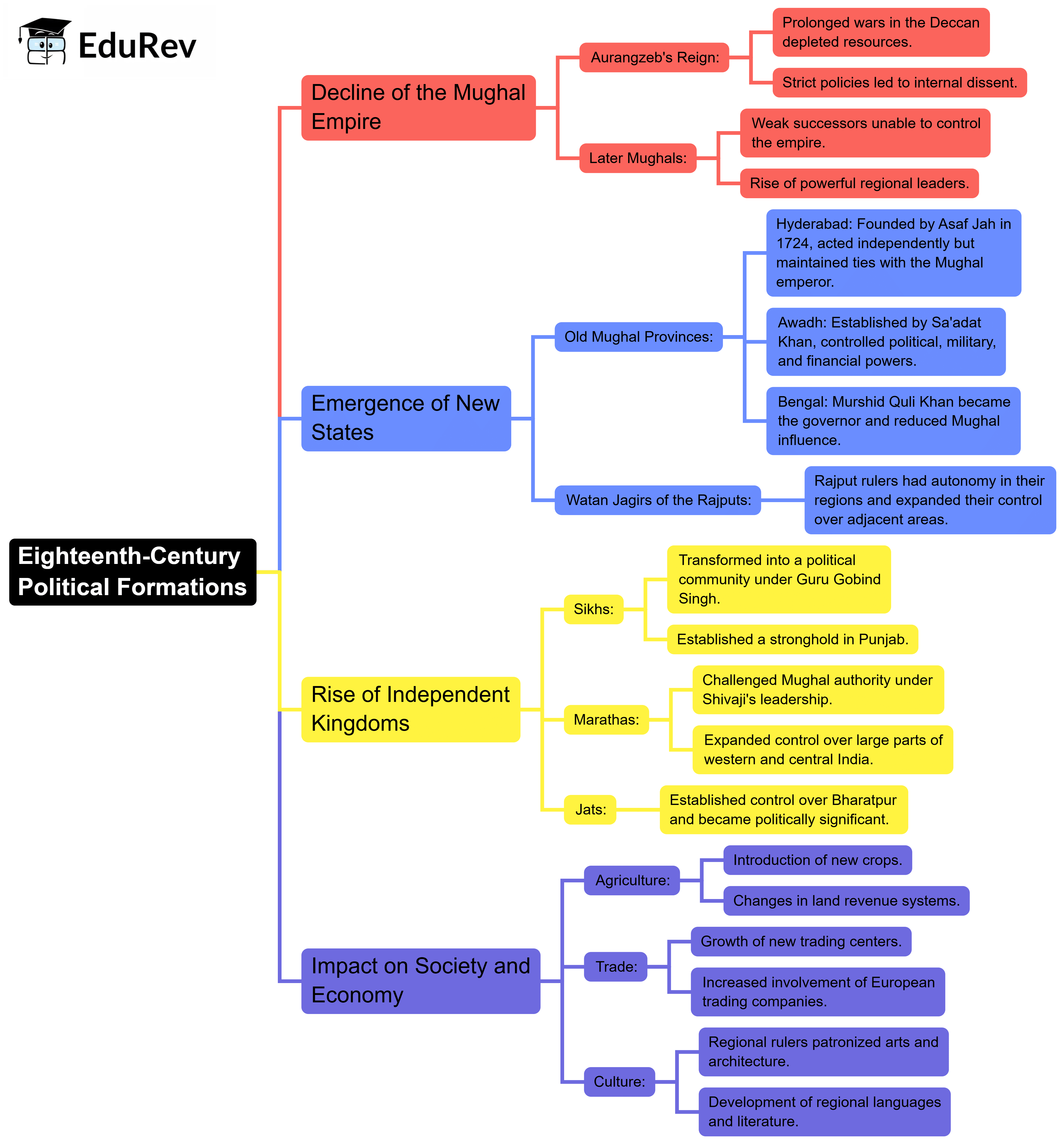Class 7 Exam > Class 7 Notes > Social Studies (SST) Class 7 (Old NCERT) > Mind Map: Eighteenth Century Political Formations
Mind Map: Eighteenth Century Political Formations | Social Studies (SST) Class 7 (Old NCERT) PDF Download

The document Mind Map: Eighteenth Century Political Formations | Social Studies (SST) Class 7 (Old NCERT) is a part of the Class 7 Course Social Studies (SST) Class 7 (Old NCERT).
All you need of Class 7 at this link: Class 7
|
63 videos|371 docs|46 tests
|
FAQs on Mind Map: Eighteenth Century Political Formations - Social Studies (SST) Class 7 (Old NCERT)
| 1. What were the key political formations in the eighteenth century? |  |
Ans. The key political formations in the eighteenth century included absolute monarchies, constitutional monarchies, and emerging republics. Notable examples are the French monarchy under Louis XIV, the constitutional framework established in Britain, and the early republican ideas that emerged in the United States.
| 2. How did the Enlightenment influence political thought in the eighteenth century? |  |
Ans. The Enlightenment significantly influenced political thought by promoting ideas of reason, individual rights, and democratic governance. Thinkers like John Locke, Voltaire, and Montesquieu challenged traditional authority and advocated for government based on consent and the separation of powers.
| 3. What role did revolutions play in shaping political formations during the eighteenth century? |  |
Ans. Revolutions, such as the American Revolution (1775-1783) and the French Revolution (1789), played a crucial role in shaping political formations. They challenged existing monarchies and inspired movements for independence and democracy, leading to the establishment of republics and the spread of revolutionary ideals across Europe and the Americas.
| 4. How did colonialism impact political structures in the eighteenth century? |  |
Ans. Colonialism greatly impacted political structures by expanding European empires and creating complex systems of governance in colonies. It led to the establishment of mercantilist policies and often resulted in conflicts between colonial powers, as well as resistance from colonized peoples seeking independence.
| 5. What were the major conflicts between monarchies and emerging republics in the eighteenth century? |  |
Ans. Major conflicts between monarchies and emerging republics included struggles for power and governance, particularly evident in the French Revolution and the American colonies' fight against British rule. These conflicts often revolved around issues such as taxation, representation, and the rights of citizens, leading to significant changes in political landscapes.
|
63 videos|371 docs|46 tests
|
Download as PDF
Related Searches




















